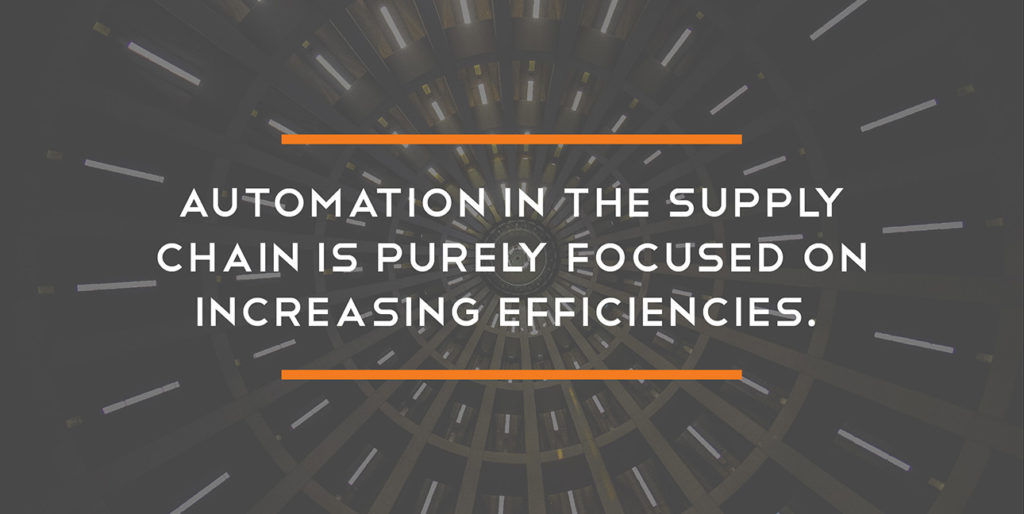In recent years, technology has been transforming various industries through automation and robotics. While some people may be wary of robotics eliminating jobs for humans, that’s not really the way the system works—at least not in the supply chain.
Automation in the supply chain is purely focused on increasing efficiencies. As consumer and client demands continue to increase and the qualified people able to fill the positions de-creases, it’s increasingly important for manufacturers to have a game plan for how they will adapt and evolve with the changing economy.
That’s why our team decided to take a look at how automation is changing the game for the supply chain.
How Automation Work in the Supply Chain
Because the supply chain is such a sophisticated and complex system, each step in the sup-ply chain creates an opportunity for human error. There are numerous parts of the process, like sorting and packing, that eat up a lot of human time. This time could be better spent on higher level tasks that actually require human analysis.
Automation makes these processes more efficient. Additionally, as customer expectations continue to follow the “I want it now” mentality, there is a need to automate some of these processes. The only way to keep up with growing consumer expectations while remaining profitable is to start implementing robotics and automation equipment that can do the work of humans faster, more accurately, and more efficiently.
Benefits of Automation
The biggest benefit to automation addresses the issue identified above. It allows companies to keep up with growing consumer expectations to create a better customer experience. There are steps in the supply chain that are tedious. When they are programmed by a computer and a robot is able to perform those functions, these steps can happen much faster and often with higher accuracy.
Robotics and automation are not designed to be a replacement for humans, but rather a compliment to them. According to Gartner, by 2023, over 30% of operational warehouse workers will be supplemented, not replaced, by collaborative robots.
Another benefit to automation includes protecting the supply chain. When something unexpected happens at a manufacturing plant, like a power outage or some other problem, in-stead of a human having to make calls, the robots step in. An automated system is able to immediately identify what the issue is, order any parts, and manage the communication channels to make reports to the appropriate organizations to get the issue resolved.
Limitations of Automation
While automation has a host of benefits, it does have some limitations. The two most notable are intricate tasks and implementation costs.
There are still some tasks where robots just can’t hold up to the capacity of a human employee. Robots are great for managing workflows and streamlined processes; however, they lack the capacity to strategize or make judgement calls. While automation can help make your processes much more efficient, you still need to have that human touch to stay com-petitive.
The other big shortfall of automation is the cost. Although in most instances the long-term savings will far outweigh the implementation costs, most companies haven’t budgeted for that up-front expense. Also, because this technology is still so new, there is still a lot of hesitancy to make such a big investment without knowing the long-term impact it has on the business.
Whether you have already started implementing robotics and automation into your operations or if it’s something you’re considering down the road, our team wants to make sure you’re doing everything you can to perform at your operational peak. Contact us today to speak to our team about ways to increase the efficiency of your supply chain.

